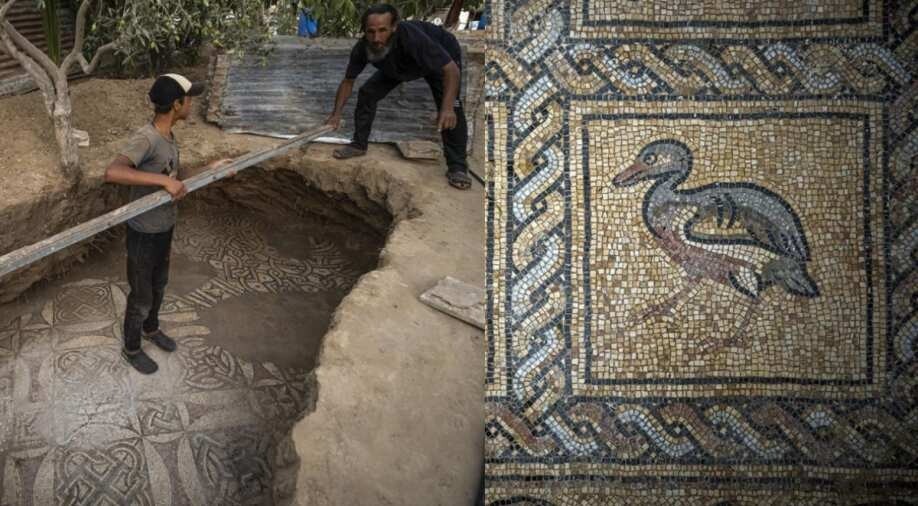A Palestinian farmer and his son over the course of three months excavated an ornate Byzantine-era mosaic. The discovery of the mosaic has reportedly sent a wave of excitement among archaeologists as it is one of the greatest archaeological treasures ever found in Gaza.

It was last spring when a Palestinian farmer in the midst of planting a new olive tree hit a hard object with his shovel, after which he called his son; together they slowly excavated the mosaic. However, the owner of the land has reportedly chosen to remain anonymous, before any official announcement, he has also covered the unearthed mosaic with tin sheets and hopes to receive some compensation for the protection of the discovery on his property.
Due to this discovery, many have also called for better protection of the antiquities in Gaza, voicing their concerns regarding the fragile collection of sites which is under threat because of lack of awareness and resources, as well as the constant threat of a conflict between Israel and local Palestinian militants. The Hamas-run department of antiquities has called it “a big archaeological discovery”, but is yet to release an official statement.
In an interview, René Elter, an archaeologist from the French Biblical and Archaeological School of Jerusalem, said, “These are the most beautiful mosaic floors discovered in Gaza, both in terms of the quality of the graphic representation and the complexity of the geometry.” He added, “Never have mosaic floors of this finesse, this precision in the graphics and richness of the colors been discovered in the Gaza Strip.”
According to Elter, the ornate mosaic dates back to somewhere between the 5th and 7th centuries, however, his estimation is based on a series of photos and videos taken by local research partners and while he has conducted research on the Gaza Strip before, he has not personally visited the site. He has also expressed concern that such a discovery undertaken by inexperienced people could damage the site.
Historically, the Gaza Strip, a coastal enclave situated between Israel and Egypt was a trade route which witnessed several ancient civilizations from the Bronze Age to the Islamic and Ottoman eras. Reports suggest that these treasures left behind by these civilizations are rarely protected and have been subjected to looting, damage, and even have been destroyed by development projects or regional conflict.
According to the people with knowledge of the matter, the mosaic is spread over about 23 square meters and the three dug-out spots on the 500 square meters patch of land, reveal parts of the mosaic. While the largest holes dug up are about 2 meters by 3 meters and marked with at least 17 drawings of animals, the other two show tiles that have intricate patterns on them.
The mosaic was unearthed just a kilometer from the Israeli border, the floor consists of 17 iconographies of beasts and birds which were surprisingly well-preserved and their colours remain bright. However, Elter has expressed concern about the discovery due to its close approximation to the Israeli separation fence saying that it is in “immediate danger”. He added, “It is imperative to quickly organize an emergency rescue intervention.”
Leave a Reply